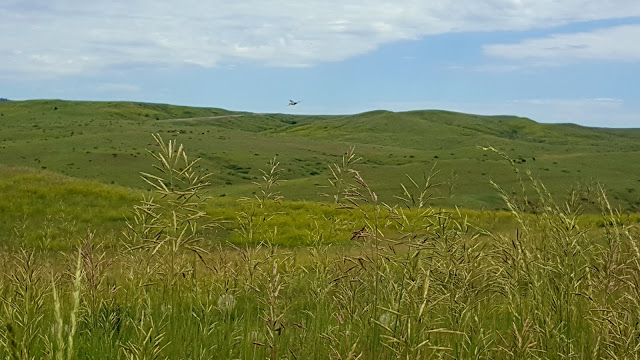Guest post by Clemson Montana Summer Program student Elizabeth Way
“The clash of ideas is the sound of freedom.”
-Lady Bird Johnson

Often, the sounds of the prairie are clashing and contradictory. The great plains are at once the romantic soundscapes of preserved wilderness and also the pronounced mechanized resonance of a working landscape. Yet there is method in the madness; this counter-intuitive cacophony illustrates the methodology by which the great plains of Montana have persevered. As a conservation landscape, universities employ extension agents to cover vast agricultural territories in order to promote rangeland sustainability, wildlife conservation, and assist food producers with animal health. As a working landscape, Montana is infamously more productive than most states, in large part due to it’s pervasive ranchers. A range scientist and professor with Montana State University set us straight: “Ag’ gets a bad rep’, but in truth, ranchers are maintaining a lot of the wildlife. Those that weren’t good stewards of the land aren’t around anymore. They went bankrupt.” As federal programs and funding remain in limbo, the relationship between scientists and producers is growing as their agendas continue converging. “There are a lot of divisive characters in this country at the moment,” a bombastic park ranger threw at me, referring to the new federal administration. “A lot of folks with something to prove.” Standing at Custer’s memorial, I closed my eyes, listened to the hushed murmurs of tourists and thought of the sounds I will carry home with me from this hybridized landscape: the wind whipping through prairie grass that extends miles to the horizon and the gurgling and belching of anaerobic bacteria emerging from the cannulas of fistulated ruminants.
WIND
The Great Plains of North America formed some 65 million years ago during the Late Cretaceous when the Western Interior Sea began receding, leaving behind rich, fertile, flat terrain. The grasslands that sprang up supported the grazing ungulates that we today recognize as horses, elk, bison and cattle. One of the least protected biomes, scientists with the USDA are researching the interactions of fire, weather and grazing habits that shape the land. Our job today is to collect samples for biomass and species identification. A researcher pointed to a drooping plant, known commonly as “Cheat grass,” and explained that it was an invasive species, native to Asia, but now problematically pervasive throughout prairies worldwide. The drought-adapted weed acts as fuel during wildfires, severely changing the natural fire regime. We were told winds on the semi-arid steppe of Montana can reach up to 143 miles per hour and standing on the grassy slope, downwind from our guide, struggling to hear her, I believed it. Combined with the effects of climate change, wildfires which would normally stimulate root growth in a fire-adapted biome, were now destroying bacteria and plants that provided food, water and shelter for wildlife. Scientists are rushing to eliminate, limit or replace the species with fire-resistant plants like Kochia and many have been experimenting with bacteria, fungi and other herbicides, to mixed results. “We have to adjust or we’ll damage these fragile ecosystems,” a rangeland specialist implored. “Doing nothing can be worse than doing the wrong thing.”
FISTULAS

Cattle, like other ruminants, have a four-chambered stomach that allows them to fully utilize nutrients in forage grasses. The rumen chamber is an anerobic environment in which bacteria digest plant matter for upwards of four days, during which a ‘cud’ is regurgitated and digested once again. Today we were studying this process thanks to the advent of cannulation. A fistulated cow is essentially fitted with a fist-sized porthole, called a cannula, that allows access for research purposes. A gruesome, yet simple procedure, fistulas have been vital for analysis of ruminant digestion and health fir the better part of the 20th century. Approximately 20 million bacteria exist in the rumen, of which only two thousand have been studied. Students lined up, fitting long plastic gloves and watched attentively as the cannula was removed and the partially digested contents of this cow’s stomach were exposed to oxygen. I stood back as it gurgled and churned, spilling out digestive fluid. One student gagged at the sound and although I am appalled as the others gleefully reached into the confined animal, clumsily fisting her gut and taking selfies, I tried to remind myself that fistula data might be useful for medicine and food production, if not for the cow’s health alone. An intern comforting the cow gently smiled at me and explained, “We can reduce consequences when we can evaluate a cow’s choices.” She handed me an alfafa cake to feed our subject. “We listen to the cows. The cows always tell us.”



